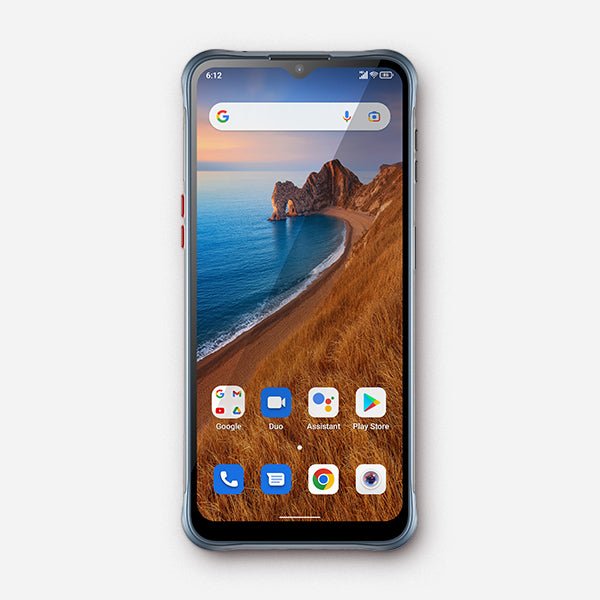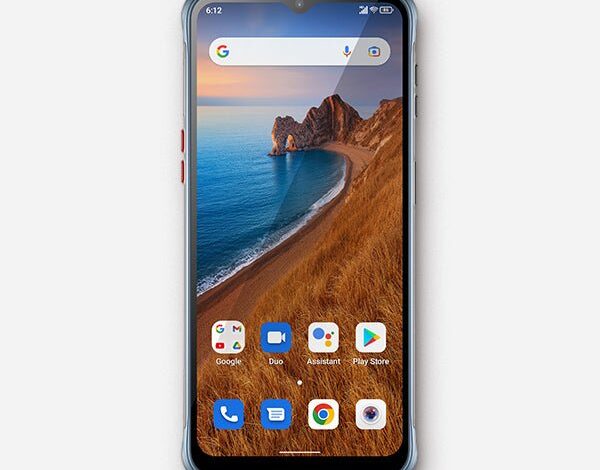
The Android App Ecosystem at a Crossroads: Beyond the Walled Garden
The Android operating system, powering the vast majority of the world’s smartphones, has long been celebrated for its open-source nature. This openness provides a stark contrast to more closed ecosystems, offering users and manufacturers unprecedented flexibility. Yet, for most consumers, the gateway to this expansive world is a single, highly curated portal: the Google Play Store. This centralized model has provided a secure and streamlined experience for billions, but it has also become the focal point of a burgeoning debate. Recent industry-shaking developments and legal challenges are questioning the very foundation of app distribution and monetization on the platform. This shift is not merely an abstract legal or business concern; it signals a potential paradigm shift that could fundamentally reshape the future of Android phones, Android gadgets, and the digital economy they support. This article delves into the architecture of the current system, the pressures forcing it to evolve, and what a more open future might hold for developers and consumers alike.
Understanding the Status Quo: The Google Play Store’s Dominance
To appreciate the magnitude of the potential changes, one must first understand the intricate system that governs the Android app landscape today. It’s a model built on a delicate balance between Android’s open-source roots and the practical need for a secure, centralized marketplace.
The Walled Garden on an Open Platform
The core paradox of the modern Android experience is the existence of a “walled garden” within an open-source field. While the Android Open Source Project (AOSP) is free for anyone to use and modify, the version of Android that consumers experience on most mainstream Android phones is licensed by Google and includes Google Mobile Services (GMS). The Google Play Store is the crown jewel of GMS. This approach has tangible benefits: Google invests heavily in security protocols like Google Play Protect, which scans billions of apps daily for malware. It provides a unified system for app updates, a trusted payment infrastructure, and a suite of powerful tools that help developers build, test, and distribute their applications globally. The result is a consistent and relatively safe user experience, which has been crucial to Android’s worldwide adoption. Data consistently shows that over 90% of all Android app downloads originate from the Play Store, cementing its position as the de facto gatekeeper.
The Commission Structure and Its Justification
At the heart of the business model is a commission structure. For developers selling digital goods or services through the Play Store, Google typically takes a service fee, often ranging from 15% to 30%. The company justifies this fee as necessary to fund the massive infrastructure behind the platform. This includes the cost of hosting and delivering petabytes of data, continuous security monitoring, developing new APIs and developer tools, and managing a global payment processing system that handles countless currencies and local tax laws. This model isn’t unique; it mirrors the structure used by other major digital marketplaces, including Apple’s App Store. However, the mandatory nature of using Google’s proprietary billing system for in-app transactions has become a significant point of contention for many developers.
Sideloading and Alternative App Stores: The “Open” Alternative
Unlike its primary competitor, iOS, Android has always allowed users to install applications from sources outside the official store, a process known as “sideloading.” This capability gives rise to a market of alternative app stores. Prominent examples include the Samsung Galaxy Store (pre-installed on Samsung devices), the Amazon Appstore, and community-driven repositories like F-Droid, which focuses exclusively on free and open-source software (FOSS). While these alternatives exist, the user experience is intentionally filled with friction. To sideload an app, users must navigate through multiple security warnings designed to discourage the practice, protecting less tech-savvy individuals from potential malware. This friction, combined with the Play Store’s pre-installation and deep integration into the OS, ensures that alternative stores remain a niche option for the majority of users.
The Shifting Tides: Why the Centralized Model is Being Challenged
The long-standing equilibrium of the Android app ecosystem is being disrupted by a confluence of developer frustration, consumer advocacy, and intense regulatory pressure. These forces are exposing cracks in the foundation of the centralized distribution model.
Developer Grievances: Fees and Control
For many developers, particularly those in the gaming, streaming, and digital subscription industries, the mandatory commission fee represents a significant operational cost. A 30% cut of revenue can be the difference between a profitable business and a failed one, especially for smaller studios and independent creators. The core grievance often isn’t just the fee itself, but the lack of choice. Developers are compelled to use the platform’s billing system, preventing them from integrating more competitive third-party payment processors that might offer lower fees. Imagine a small software-as-a-service (SaaS) company that offers a mobile client for its product. While it can process payments on its website for a standard 3% fee, it must surrender 15-30% for any user who conveniently signs up through their Android app. This disparity creates a powerful incentive to push users away from the native app experience, creating a disjointed customer journey.
The Consumer Impact: Choice, Pricing, and Innovation
While the debate is often framed around developers, the implications for consumers are profound. The commission fee is a business cost that is often passed on to the end-user in the form of higher prices for apps, games, and subscriptions. If developers had the option to use a payment processor with a 5% fee instead of a 30% fee, they could theoretically lower their prices, passing those savings directly to consumers. Beyond pricing, the lack of competition in app distribution and payments can stifle innovation. When a single gatekeeper controls the rules, it can limit the types of business models that can flourish. A more open system could pave the way for novel monetization strategies, such as micropayments, alternative subscription models, or direct creator-to-consumer relationships that are currently cumbersome to implement within the existing framework.
Regulatory Scrutiny and Antitrust Concerns
This entire dynamic has not gone unnoticed by regulators around the world. A central theme in recent Android news has been the global increase in antitrust investigations into major technology platforms. The core legal question is whether a company that controls a dominant mobile operating system can legally leverage that dominance to force developers to use its proprietary app store and payment services, thereby stifling competition in those adjacent markets. Lawmakers in various regions are proposing and passing legislation aimed at prying open these walled gardens, mandating that platform holders allow for alternative app stores and third-party payment systems. This regulatory pressure is perhaps the single most powerful catalyst for change in the ecosystem.
Envisioning a More Open Android Ecosystem
As the walls of the garden begin to show cracks, it’s possible to envision a fundamentally different future for the Android platform. This new landscape could offer more flexibility and choice, but it would also introduce new complexities and challenges.

The Rise of Direct-to-Consumer and Third-Party Billing
One of the most immediate and impactful changes would be the introduction of alternative in-app payment systems. In this scenario, a developer could present users with multiple payment options at checkout. For instance, a user buying a digital book could choose to pay with their saved Google Play credit or opt to use PayPal or a direct credit card entry processed by Stripe, potentially at a lower price. This would create a competitive market for payment processors within the app ecosystem itself. However, this introduces significant security and trust challenges. How would the platform ensure that third-party payment providers are secure and protect user data? Who would be responsible for handling refunds, subscription management, and customer support disputes? A robust certification and moderation framework would be essential to prevent a surge in fraudulent or malicious payment handlers.
Elevating Alternative App Stores
A more profound shift would involve making alternative app stores first-class citizens on Android phones. Imagine an onboarding process for a new device where, alongside signing into your Google account, you are asked which app marketplaces you’d like to enable. This could place a manufacturer’s store, like Samsung’s, or a specialized third-party store, like a curated indie game marketplace, on more equal footing with the Play Store. This would decentralize app discovery and curation, allowing different stores to cater to different niches. For developers, it means they could choose a distribution platform whose policies and fees best align with their business model. For users of various Android gadgets, from tablets to smart displays, it could mean access to a wider and more diverse range of applications tailored to their specific needs.
Implications for Security and User Experience
The primary counter-argument to this open future is security. A more fragmented ecosystem could potentially expose more users to malware and poorly-vetted applications. Mitigating this risk would require a multi-layered approach. The Android OS itself would need to strengthen its sandboxing and permissions systems, ensuring that even a malicious app has limited ability to harm the user’s device or data. Furthermore, a system of notarization, where apps must be scanned and approved by a central security authority before they can be installed from any source, could provide a baseline level of safety without mandating a single storefront. The user experience would also need careful design to prevent confusion and choice overload.

Navigating the Evolving Landscape: Tips and Best Practices
As the ecosystem evolves, both users and developers will need to adapt. Proactive preparation and a clear understanding of the new dynamics will be key to successfully navigating this transition.
For Android Users:
- Stay Informed: Pay close attention to Android news and software updates from your device manufacturer. Understanding how new payment options or app store choices are being implemented is the first step to making informed decisions.
- Exercise Caution: With greater freedom comes greater responsibility. If you choose to use alternative app stores or sideload applications, be diligent about where you source your software. Stick to reputable developers and marketplaces to minimize security risks.
- Compare and Save: As developers begin offering direct payment options, you may find opportunities to save money on your favorite apps and subscriptions. Always check if a trusted developer offers a discount for purchasing directly through their website or a secure third-party payment link within the app.
For Android Developers:
- Research and Experiment: Don’t wait for changes to be forced upon you. Begin researching alternative payment SDKs and distribution channels now. Understand their fee structures, technical requirements, and regional availability.
- Prioritize User Trust: If you implement a third-party payment system, be transparent with your users. Clearly communicate why you are offering it, what security measures are in place, and how their data is being handled. Trust will be your most valuable asset.
- Design for Flexibility: Architect your app’s monetization logic to be modular. This will make it easier to add or switch between different billing systems in the future without requiring a complete rewrite of your codebase, ensuring a seamless experience for the user.
Conclusion: A New Chapter for Android
The Android ecosystem is standing at a historic inflection point. The forces of regulatory pressure and developer demand are pushing against the inertia of a centralized, highly profitable model that has defined the mobile landscape for over a decade. The outcome of this struggle will not be a simple victory for one side but rather a complex evolution toward a more open, competitive, and potentially more fragmented marketplace. The road ahead will be filled with technical challenges related to security, user experience, and developer implementation. However, the destination promises a future with greater choice for consumers, more economic freedom for creators, and a new wave of innovation across the entire spectrum of Android phones and Android gadgets. This ongoing transformation will undoubtedly be the most compelling story in the world of mobile technology for years to come.



